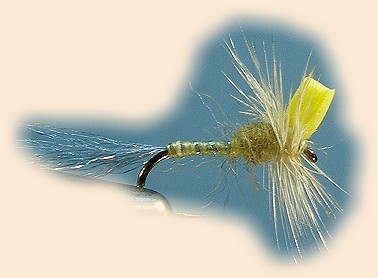The Suspender PMD is one of my preferred patterns for fishing
the PMD hatch (Pale Morning Dun) on the Missouri River. I
fish this pattern on a dead drift, either alone or as an indicator,
in tandem with a soft hackle, 12 to 18 inches below the dry fly.
I also tie the pattern in appropriate colors and smaller sizes
as midge and blue-winged olive imitations.
Materials: Suspender PMD
Hook: - Mustad 94840, #16.
Thread: - Uni 8/0, light cahill.
Post: - Closed cell foam, yellow.
Tail/Shuck: - Antron, blue dun.
Rib: - Crystal Flash, chartreuse.
Abdomen: - Tying thread.
Thorax: - Beaver dubbing, dyed pmd.
Hackle: - light ginger.
Tying Instructions:
1. Pinch the barb and mount the hook in the vise. Attach
the thread immediately behind the eye and dress the front
quarter of the hook shank.
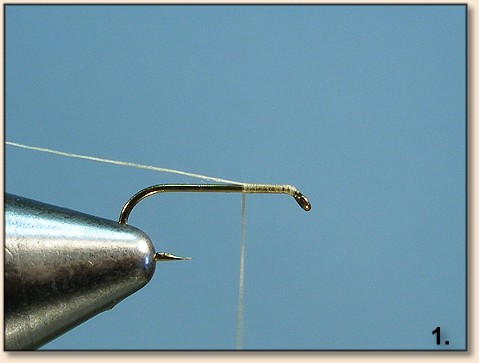
2. Cut a strip of closed cell foam to a width similar to
the thickness of the foam sheet. Attach the strip of foam
to the hook immediately behind the eye, with a short length
of foam extending forward over the eye. Take a few additional
thread wraps between the eye and the foam to slightly elevate
the post.
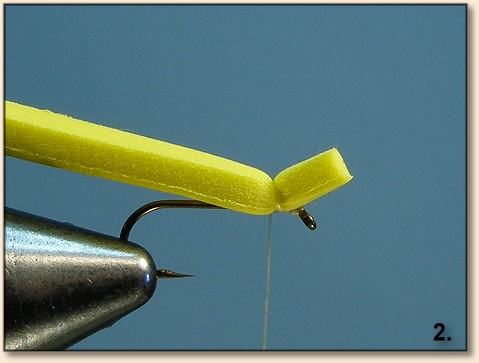
3. Take a few additional thread wraps at the initial tie in
point. Trim the rear portion of the foam strip and secure
with x-wraps over the tag end of the foam post.
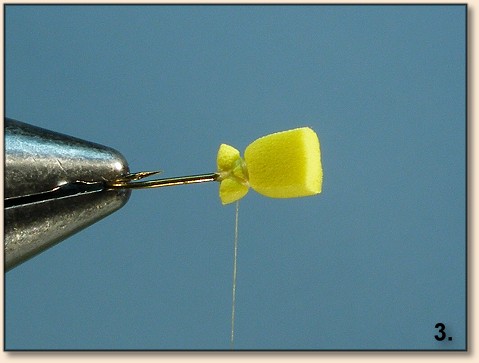
4. Bind the excess foam to the hook shank to form an underbody
for the thorax. Spiral the thread to the bend in the hook. Tie
in a length of antron.
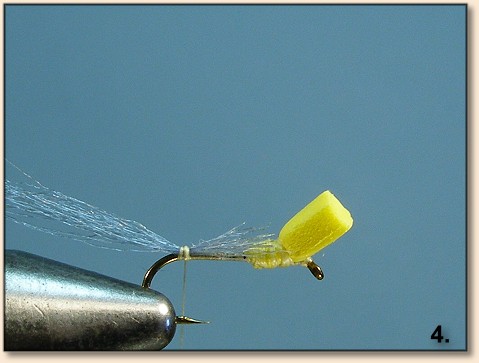
5. Trim the antron to a length approximately equal to the
length of the hook shank. Tie in a length of Crystal Flash.
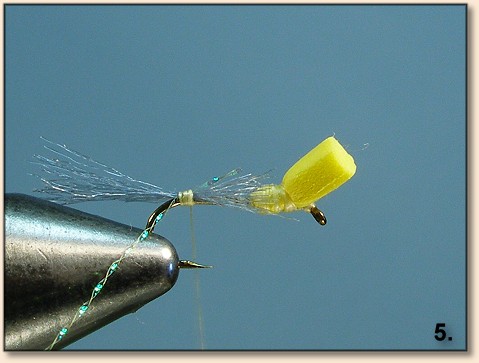
6. Take one wrap of thread behind the rib and then wrap
the thread forward to the base of the post to form the
abdomen. Counter-wrap the abdomen with the Crystal Flash
and tie off.
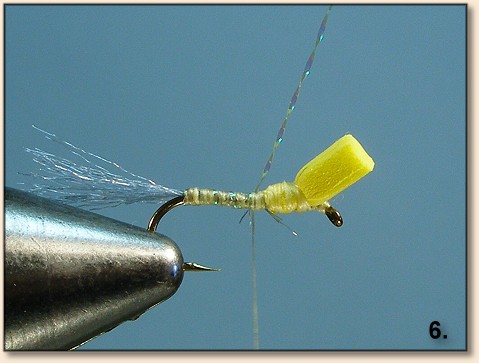
7. Tie in the hackle, convex side forward, at the junction
between the thorax and the post.
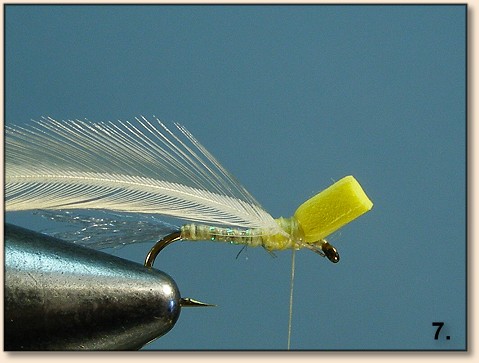
8. Dub the thread. Wrap the thorax, beginning with one
wrap in front of the hackle, wrapping rearward to the
junction between the abdomen and thorax and returning to
the point immediately in front of the hackle.
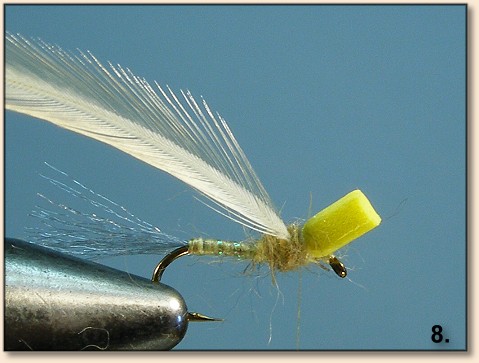
9. Take three turns of hackle and tie off.
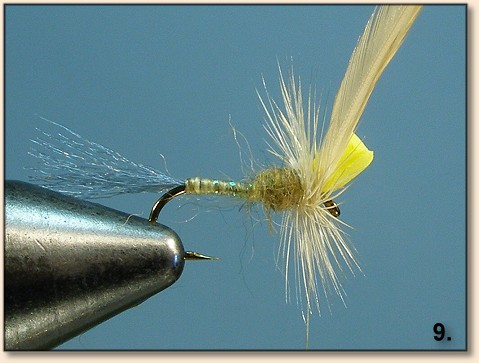
10. Whip finish between the post and the eye to complete
the fly. ~ John Mundinger
About John:
John is a former employee of the Montana Department of Fish,
Wildlife and Parks, where he worked as a wildlife research
biologist and in department administration. After taking an
early retirement, he now is self-employed as a natural
resource management consultant, specializing in collaborative
problem solving. John got hooked on fly fishing at an early
age but put fishing on stand-by while his children were growing
up. Learning to tie flies fulfilled a childhood dream and
rekindled his interest in fishing. His home water is the
Missouri River. In addition to fly fishing, he also enjoys
paddling a canoe. You can reach him at: john.mundinger@gmail.com

